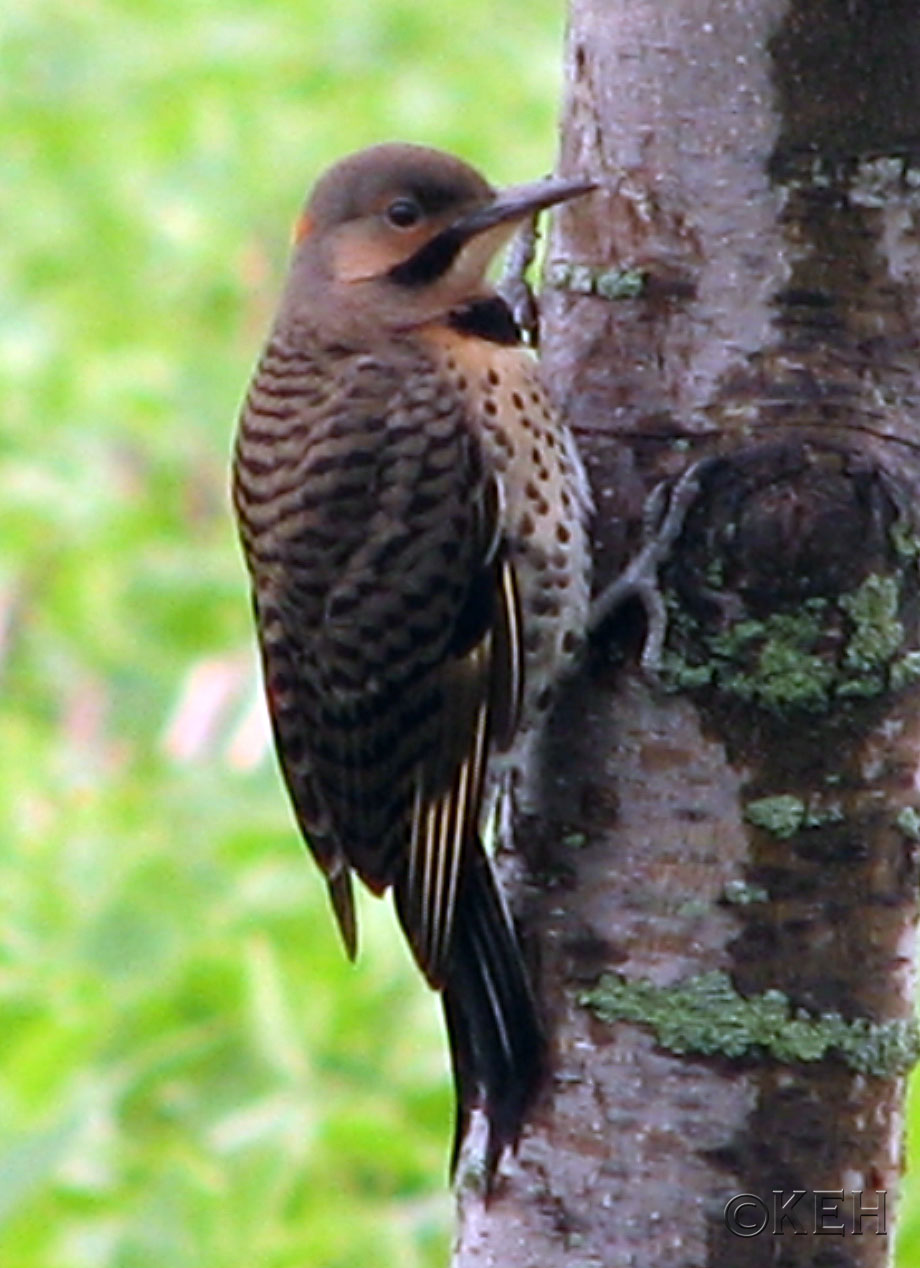

Young in the nest are vulnerable to nest predators such as raccoons, squirrels, and snakes. They may make tentative flights around the predator or make bill-poking movements towards the predator. Northern flickers do not respond strongly to predators. What eats them and how do they avoid being eaten? They also consume fruits in the fall and winter, as well as weed seeds, acorns, and other types of nuts. Northern flickers mainly consume insects and invertebrates, such as grasshoppers, crickets, ants, termites, wasps, aphids, beetles and their larvae, caterpillars, and spiders. Their song is a loud "wick wick wick wick wick," while individual notes sound like a loud "klee-yer" and a squeaky "flick-a flick-a flick-a." Sometimes tail spreading accompanies head swinging or bobbing displays.įlickers sing during flight. There is also a "head bobbing" display that may be used. A more aggressive display is "head swinging," whereby a flicker will use side-to-side movements of his head and body against an opponent. That is, a flicker may point his bill at a rival with his head tilted forward, or actually peck at an opponent. Northern Flickers are migratory, moving between summer and winter ranges during the spring and fall.Īggressive displays such as "bill directing" or "bill poking" are used by flickers.

To protect their mates or territories, birds of the same sex become aggressive towards each other. Male flickers recognize females by sight. They protect territories that may include small family groups. Northern Flickers are active during the day. Status: wild 110 months Bird Banding Laboratory Most Northern Flickers probably live much less than this, maybe surviving only a few years. The longest lifespan recorded is 9 years and 2 months for a yellow-shafted form of the Northern Flicker and 6 years and 8 months for a red-shafted form of the Northern Flicker. Young flickers will molt to adult plumage from June to October. After the nestling period of 25 to 28 days, the young remain with the parents for some time, calling to the parents to be fed.

The breeding season occurs from February to July. These animals are found in the following types of habitat.They are also found in open areas, forest edges, clear-cut areas, burnt areas, agricultural lands, and residential areas. Northern Flickers are found in wooded areas that have stands of dead trees. In addition, these woodpeckers are found on Grand Cayman, Cuba, and range as far south as the highlands of Nicaragua. They winter in the southern part of the United States and in northern Mexico. Northern Flickers range from Alaska eastward to Quebec, then south throughout the entire United States. Females are similar in appearance but somewhat less colorful. In the Eastern forms, called Yellow-shafted Flickers, males have yellow underwings, while the Western forms, called Red-shafted Flickers, have reddish underwings. Underneath, the male is light tan with heavy black spotting. The male has a tan head, gray crown, red nape (back of the head and neck), black moustache, and a black cresent on the breast. They are the only woodpecker to have a gray-brown barred back and white rump. Their wingspan is 54.1 cm, tail length is 12.2 cm, and bill length is 4.2 cm. Northern Flickers are 30 to 35 cm in length.


 0 kommentar(er)
0 kommentar(er)
